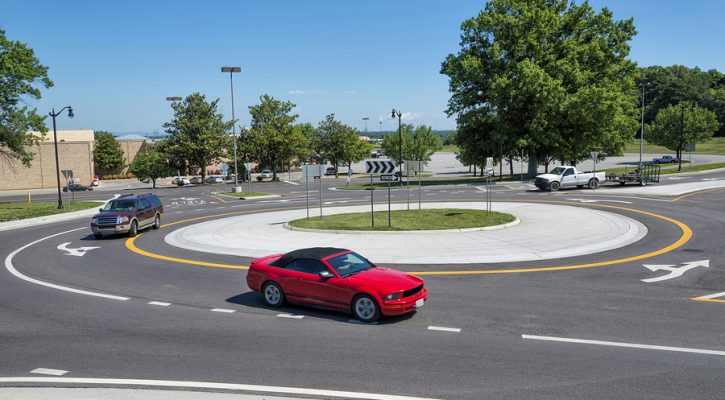
Replacing Signal Intersections With Roundabouts
November 10, 2016
By replacing their signaled intersections with roundabouts , Carmel Indiana, a suburb of Indianapolis, made a bold decision to spend more money up front in order to save a lot more money in the long run. While they were at it, they saved quite a few lives and prevented a lot of injuries.
Roundabouts are intersections designed to keep traffic moving more smoothly through intersections without the need for traffic lights. Roundabouts accomplish their mission by forcing traffic to slow down while allowing traffic from all directions to enter the intersection without having to stop. Since 2001, the city has built or replaced more than 100 intersections using roundabouts and there are plans to build even more. They hope to have the work completed by 2018.
Even though traffic is forced to slow when entering an intersection, it rarely has to stop. However, if a vehicle does need to stop while yielding to another vehicle, it doesn’t have to stop for long. The driver can enter the intersection as soon as traffic is clear without having to wait for a green light. Europe adopted roundabouts long ago and they’re becoming more common every year but the US didn’t adopt the idea until the 1990s and roundabouts here are few and far between.
By replacing their intersections with roundabouts, the city of Carmel saw dramatic results:
- Roundabout construction costs an average of $125,000 less than a signaled intersection.
- No more money is spent on maintaining or replacing traffic signals.
- Roundabouts don’t fail to operate when there’s a power outage.
- Without having to idle while waiting at a light, observations at ten study sites show an average gas savings of 24,000 gallons per year.
- Less gas used means less pollution.
- Each replacement intersection can handle a 30 to 50 percent increase in traffic flow.
- Less time spent in traffic means greater productivity.
- With all traffic going in the same direction, there are fewer serious crashes.
- Head-on and high speed right angle collisions are much less likely at roundabouts.
- Slower speeds give drivers more reaction and decision making time.
- Roundabouts are safer for pedestrians.
- Injury crashes were reduced by almost 80% at intersections replaced by roundabouts.
- Overall, crashes were reduced by 40%.
- Fewer crashes mean lower costs for first responders.
- Fewer crashes mean first responders can focus on other needs.
To save money and lives, more cities and counties need to consider following Carmel’s lead.
For more information, visit: City of Carmel Indiana
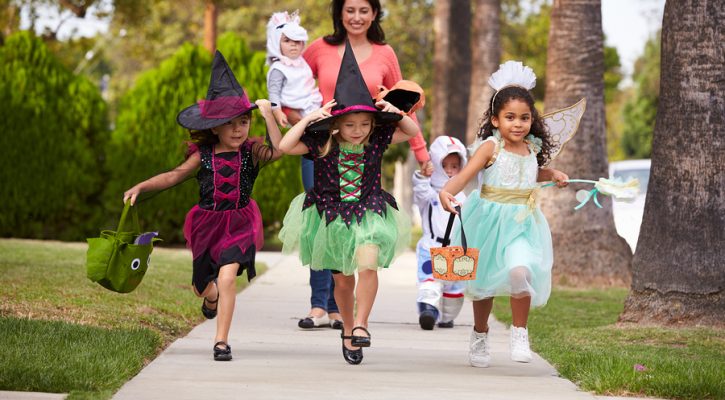
Holiday Driving: Halloween Safety Tips
October 28, 2016
The chill is in the air, orange is the dominant color and kids are beginning to think of their plans for Halloween. Before you go out shopping for costumes and buying bags of candy this year, consider a few safety tips and spend a few minutes planning for the night ahead.
- Identify what type of celebrations will be taking place and where they will be located. Not only will it help determine your plans, it will help you be an aware driver as you travel on the roadways. If you’re attending a party, plan for a designated driver or commit to not drinking. Even small amounts of alcohol can impair your judgment and driving. Driving under the influence can kill or cause trauma, be expensive and embarrassing.
- When costume planning, make sure that all costumes fit appropriately and won’t restrict movement or visibility, either as a pedestrian or behind the wheel. Ensure foot wear is sturdy. Tripping, falling, difficulty steering or braking can be dangerous!
- Add reflective tape to costumes and replace flash light batteries to ensure you will be visible, whether escorting trick or treaters or attending an event yourself. Make sure that any children you’re with have flashlights, glow stick, bright candy bags, and reflective tape on costumes as well. Clear up any yard obstructions, water hoses, and overgrown vegetation to make it easier to see and maneuver for both pedestrians and vehicles.
- Know your planned route, to avoid the unexpected. Plan to travel in well lighted areas. If walking, use sidewalks and crosswalks. If driving, avoid areas of heavy pedestrian traffic and park in areas with the greatest visibility. Select alternate routes that will provide the least amount of risk and the most amount of safety. Arrange to give yourself extra time to and from your destination.
- Know what night of the week Halloween falls on. If Halloween is on a weekend, expect the festivities to begin early in the day and prepare to be a defensive driver. If it is on a weeknight, children will be starting their rounds before the evening rush hour is over. Be especially watchful and, if you can, avoid driving on Halloween altogether.
- Be alert for kids playing in costumes during the day, darting from house to house or in between parked cars. Pay special attention beginning at 4:30pm for the younger treat seekers. Turn on your head lights to make your vehicle more visible. Dusk is the most dangerous time of day because lights and shadows can fool you so drivers need to be especially vigilant.
- Reduce distractions. Make sure your cell phone is on silent, your radio volume is low and your passengers are aware to minimize distractions and assist with being alert to the surrounding environment.
- Be extra cautious as you pull into and leave driveways, parking lots and alleys. Watch for children who may dart out between cars, at roadways, medians and on curves. Be sure to check your blind spots thoroughly and maintain a search and scan of the driving environment every few seconds.
- Travel well below the posted speed limit. Be extra patient with pedestrians and other vehicles and always be prepared to stop at a given moment. Other drivers may be distracted by the trick or treaters inside their vehicle and may not see you. Avoid passing or going around stopped vehicles. They may have passengers entering and exiting hurriedly and carelessly.
Halloween can truly be a fun night full of great memories! Take a few steps to keep it safe and trouble free.
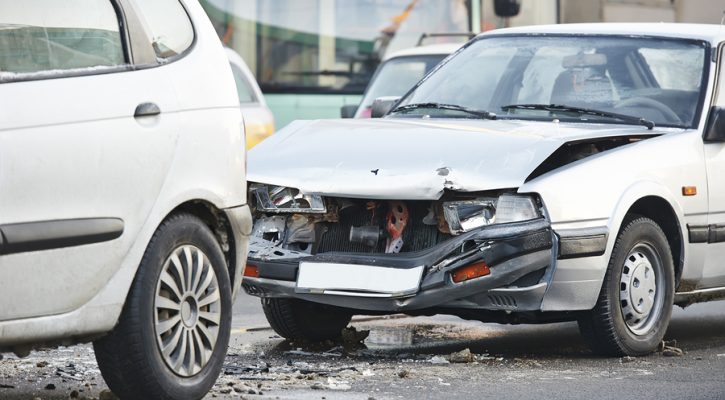
There’s No Such Thing As A Traffic Accident
July 14, 2016
The National Coalition for Safer Roads wants us to change our vocabulary and get rid of the word accident when discussing motor vehicle collisions. This is an issue we at Lowest Price Traffic School have been writing about for years and we’re strong supporters of the campaign to remove the word from any discussion of motor vehicle crashes.
In 2012 we published an article in our sister blog at OnlineTexasDefensiveCourse.com titled There is No Such Thing as a Motor Vehicle Accident. Along with that article, we also ensured that the word wasn’t used in any of our online courses.
The term traffic accident is deeply ingrained in the American language and most people use it without giving a thought to its true meaning but let’s look at what is actually meant by that term. An accident is something we have no control over. Lightning strikes, earthquakes, and falling tree limbs are things we can’t control. They’re accidents! The great majority of traffic collisions are caused by someone making a poor choice. The fact that the person didn’t fully consider the consequences and didn’t mean for the crash to happen doesn’t make it accidental. The driver or drivers consciously made the choice that led to the crash! Even driving distracted and not seeing the danger ahead is a choice a driver makes.
This doesn’t mean that accidents on the highway can’t happen but they’re extremely rare. As a driving school instructor, I removed the word from my vocabulary almost 20 years ago. I’ve heard all kinds of stories about car crashes and the events that led up to them but I can only recall hearing one story about a crash that I would consider an accident. The student told us that he was driving one day when a great blue heron suddenly crashed into and shattered his windshield. The shock of that sudden bird strike startled him so much that he ran off the road and took out a mail box. That was a situation that the driver had no control over!
A driver who chooses to run a red light doesn’t have an accident; he causes a crash! Someone who drinks and then makes the choice to drive doesn’t have an accident; he or she causes a crash! Using the word seems to take the responsibility away from the people who made the bad choices and allows those drivers who made the poor choice to pin the blame on fate. It’s not until we can change the terms that are used that we can get people to understand their responsibility when it comes to preventing motor vehicle crashes.
To take the pledge to remove the word “accident” from your vocabulary, visit: Take the pledge
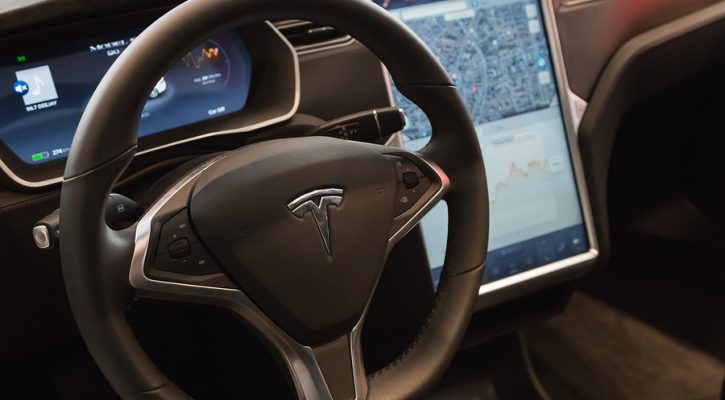
Tesla Autopilot Car Crash Kills Driver
July 5, 2016
In the first crash of its kind, a Tesla automobile with its “Autopilot” engaged was involved in a crash that killed its owner. According to Tesla, “this is the first known fatality in just over 130 million miles where Autopilot was activated.” While there are a lot of lessons to be taken from this crash, the first lesson to know and understand is that, in spite of the name, the Autopilot system does not make the Tesla an autonomous, self-driving car.
While the news about the crash was just released last week, the crash actually happened on May 7, 2016. The Tesla was nearing an intersection as a tractor-trailer was making a left turn. The Tesla failed to stop and drove under the trailer with the windshield impacting the bottom part of the trailer. Tesla engineers feel that the Autopilot’s brakes failed to engage because the camera failed to distinguish between the bright sky and the large white side of the trailer. Adding to the problem, the trailer’s height may have fooled the camera into believing the road was clear ahead.
The Tesla camera’s inability to distinguish white paint from a clear blue sky poses a major problem. The camera is a black and white camera that can only distinguish between black, white, and various shades of gray. It has been suggested that, if the system had used Lidar (laser based radar) instead, the colors wouldn’t have mattered.
Tesla’s Autopilot system is actually a “driver-assist” system that includes, among other things, an active cruise control that maintains the posted speed limit and automatically applies the brakes when it gets too close to a vehicle ahead. The cruise control uses data from on-board cameras and road maps to maintain position and speed. There’s also a lane departure system that automatically keeps the car within its lane as long as the cameras can detect lane marking lines. The vehicle also has the ability to automatically parallel park.
Even when working together, these systems don’t make the vehicle truly autonomous or self-driving. In fact, the vehicle is set to manual driving by default and, when the Autopilot system is engaged, the driver has to acknowledge a message that says the Autopilot is an assist program and drivers must keep their hands on the wheel at all times.
There is evidence that the driver of this vehicle hadn’t been paying attention to the road and may, instead, have been watching a movie. If he had been paying attention and kept his hands on the wheel, he should have been able to stop the car in plenty of time to avoid the collision.
The name “Autopilot” may have fooled a lot of drivers and there are many examples on Youtube of Tesla drivers treating the Autopilot system as if it were a self-driving system. One Youtube video shows a Tesla driver asleep at the wheel in stop-and-go traffic.
Several vehicle manufacturers such BMW, Mercedes, and GM offer similar driver-assist features as an option in their higher end vehicles but it’s going to be a very long time before the systems are improved and tested enough to be considered fully autonomous. For now, these systems provide added safety but they still aren’t equal to the best safety feature of all; a driver who’s paying attention to the road ahead.
For more information, visit: A Tragic Loss
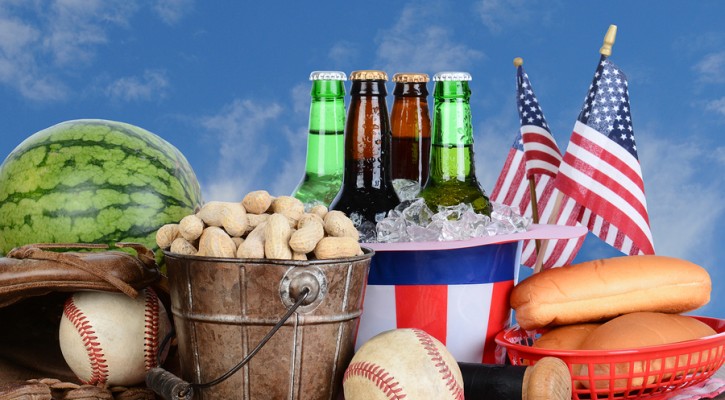
Tips for Safe Summer Driving: Buzzed Driving is Drunk Driving
June 21, 2016
As we near the Fourth of July holiday period, people are starting to make plans for their holiday celebration but unfortunately, many forget to plan for their alcohol consumption. Too many Americans feel that if they’ve only had a little to drink, they’re still capable of driving safely. They tend to forget or ignore the fact that buzzed driving is impaired driving.
In 2014, over the 4th of July holiday (6 p.m. July 3rd to 5:59 a.m. July 7th), 164 people were killed in crashes involving at least one driver or motorcycle operator with a blood alcohol concentration (BAC) of .08 or higher. Those preventable deaths make up 41% of the 397 people killed in motor vehicle traffic crashes over the 4th of July period.
Much of the tragedy from drunk driving can be prevented with a few simple precautions before going out to celebrate:
- Plan a safe way home before the festivities begin.
- Before drinking, please designate a sober driver and give that person your keys.
- If you’re impaired, use a taxi, call a sober friend or family member, or use public transportation so you’re sure to get home safely.
- Use your community’s Sober Rides program.
- If you happen to see a drunk driver on the road, don’t hesitate to contact your local law enforcement.
- Parents of teen drivers should make sure that teens don’t have access to alcohol and that any teen gatherings are alcohol free.
If you know someone who is about to drive or ride while impaired, take their keys and help them make other arrangements to get to where they are going safely.
Driving impaired is simply not worth the risk, no matter the level of impairment. Alcohol not only affects each person differently, it can affect the same person differently. The effects change based on your food consumption, chemical interactions with other medications and general health. Fatigue, after a long day in the hot sun, can also impact the effects of alcohol.
The consequences of driving impaired are serious and real. Not only do you risk killing yourself or someone else, but the trauma and financial costs of a crash or an arrest for driving while impaired can be significant. Violators often face jail time, the loss of their driver’s license, higher insurance rates, and dozens of other unanticipated expenses.
Don’t let this Fourth of July blow up in your face. Remember, Buzzed Driving Is Impaired Driving. Designate your sober driver before the parties begin.
For more information, please visit http://www.stopimpaireddriving.com/
